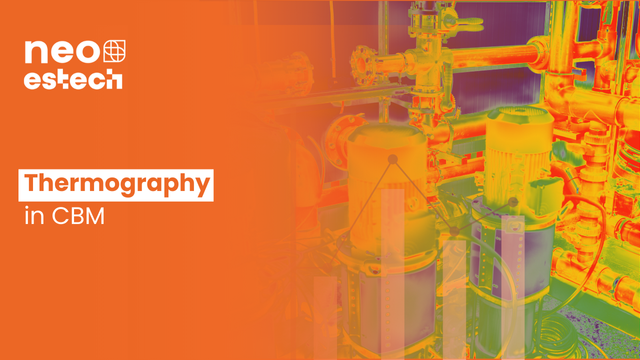Thermography is an innovative technique that plays a crucial role in Condition-Based Maintenance (CBM). Using thermal images to identify temperature variations in equipment, it enables precise diagnostics and early detection of problems. This approach has proven especially effective in refrigeration and air conditioning systems, where continuous monitoring is essential to ensure efficiency and prevent failures.
What is Thermography and how is it used in CBM?
Thermography consists of using infrared cameras to capture thermal images of surfaces and components. These devices identify temperature variations that indicate potential problems, such as overheating, leaks, or mechanical wear.
In CBM, thermography is applied to:
- Monitor Critical Components:
- Motors, compressors, heat exchangers, and electrical connections are inspected regularly to detect anomalies.
- Diagnosis of Valves and Pipes:
- Identifies valves that are not sealing properly or pipes with restrictions that compromise refrigerant flow.
- Predictive Maintenance:
- Complements other monitoring techniques, allowing proactive interventions before failures become critical.

Benefits for Refrigeration and Air Conditioning Systems
- Early Problem Detection:
- Thermography identifies overheating in electrical connections, leaks in refrigeration systems, and other deviations before they cause serious failures.
- Prevention of Secondary Damage:
- By addressing thermal anomalies quickly, it prevents minor problems from escalating, reducing corrective repair costs.
- Increased Equipment Lifespan:
- Regular maintenance based on thermal images reduces premature wear of critical components.
- Operational Safety:
- Overheated electrical connections can cause fires. Thermography identifies these risks before they compromise operation.
Impact on Energy Efficiency and Failure Prevention
- Energy Efficiency:
- Equipment operating in ideal conditions consumes less energy. Thermography helps identify problems such as overheating that lead to excessive consumption.
- Reduction in Operating Costs:
- By predicting failures and planning maintenance, unscheduled shutdowns are avoided, reducing financial impact.
- System Reliability:
- Thermography improves overall system reliability by ensuring components operate within expected parameters.
- • Sustainability:
- Efficient operation of refrigeration and air conditioning systems reduces the carbon footprint, contributing to environmental goals.
Conclusion
Thermography is an essential tool in Condition-Based Maintenance (CBM), especially in applications such as refrigeration and air conditioning systems in supermarkets. With its ability to identify problems early, increase energy efficiency, and prevent serious failures, it offers tangible benefits for the operation and maintenance of critical assets.
Ready to implement thermography in your maintenance strategy? Discover how NEO Estech can transform the way you manage your systems and maximize your results!


